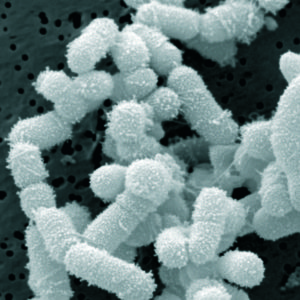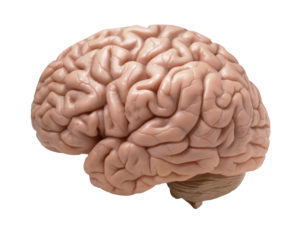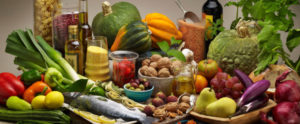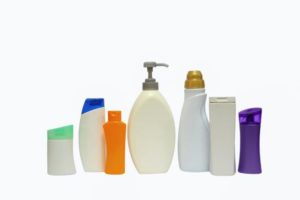 Today's topic: sinusitis success stories. For those suffering from chronic sinusitis or frequent sinus infections it sounds incredible, doesn't it? For more than 5 years I've posted about the probiotic Lactobacillus sakei and how it can successfully treat sinusitis - both chronic sinusitis and acute sinusitis (sinus infections). Back in January 2013 I read a study by Abreu et al (2012) that the sinus microbiome (microbial community) in people with chronic sinusitis was imbalanced and that this beneficial bacteria could be a possible treatment. I had suffered from chronic sinusitis for years, so of course I went searching for Lactobacillus sakei. It wasn’t in any probiotics at the time, but I did find it in kimchi. Through experimentation I (and my family) successfully treated our sinusitis by dabbing and smearing a little of the kimchi juice in the nostrils once or twice a day. It felt miraculous!
Today's topic: sinusitis success stories. For those suffering from chronic sinusitis or frequent sinus infections it sounds incredible, doesn't it? For more than 5 years I've posted about the probiotic Lactobacillus sakei and how it can successfully treat sinusitis - both chronic sinusitis and acute sinusitis (sinus infections). Back in January 2013 I read a study by Abreu et al (2012) that the sinus microbiome (microbial community) in people with chronic sinusitis was imbalanced and that this beneficial bacteria could be a possible treatment. I had suffered from chronic sinusitis for years, so of course I went searching for Lactobacillus sakei. It wasn’t in any probiotics at the time, but I did find it in kimchi. Through experimentation I (and my family) successfully treated our sinusitis by dabbing and smearing a little of the kimchi juice in the nostrils once or twice a day. It felt miraculous!
By the end of 2013 I started this blog to get the word out about Lactobacillus sakei, and to also hear the experiences of others. (See results post) In the last 5 years I have heard from hundreds of people, including lots of sinusitis success stories with Lactobacillus sakei – especially using kimchi, sauerkraut made with garlic, sausage starter cultures such as Bactoferm F-RM-52, and recently with the sinusitis probiotic Lanto Sinus, which was introduced in 2018. When a Lactobacillus sakei product works as a sinusitis treatment for a person it feels absolutely wonderful and amazing. Sinus health after years of suffering! Unfortunately, it appears that Lactobacillus sakei may not work for everyone - only trying it determines if it works and how well.
The following are excerpts of some of the sinusitis success stories that people have reported - almost all are from comments after posts on this site, and a few from emails to me. Sometimes we need to hear successful treatment stories, especially if we’ve been struggling with sinusitis for a long time. Just keep in mind that these are stories of people experimenting on their own - how they used Lactobacillus sakei varies and their experiences vary. (See Sinusitis Treatment Summary for methods). Note that in Feb. 2019 the Lacto Sinus name was changed to Lanto Sinus in order to get a trademark - but the product remains exactly the same.
J. October 2017
So glad I found this site! Have been struggling with chronic sinus and gut issues go over 20 years after several rounds of antibiotics.
Immediately after reading thru this I put a dab of Kimchi juice up each nostril (had some on hand, as I eat a lot of fermented veggies). I could tell almost immediately that something was happening. Almost felt as if there was a duel going on in my sinuses between the kimchi probiotics and the nasties in my sinuses. Had some stuffiness and stiff neck but went to bed and slept great last night and woke up this morning with clearer sinuses and feeling better!
Jo. October 2015
Through the years I've tried everything for sinus infections and nothing but antibiotics helped. When I read about kimchi helping I tried that too. To my utter delight and relief, Sunja's white kimchi worked a miracle! I bought another 3 jars and keep it in the refrigerator for the next bout.
M. November 2018
I had great success in treating my chronic sinusitis with Lacto Sinus.
I’ve had sinus problems for 2 decades and tried all sorts of medicines and treatments, but nothing helped. Every single sore throat and every cold, no matter how minor, led to full-blown sinusitis and having to take antibiotics for weeks. I was always in fear of getting sick. And even when I was “healthy” I really wasn’t, I always had some symptoms. I would frequently wake up with a sore throat and with thick phlegm dripping down my throat.
I was desperate when I tried Lacto Sinus and was thrilled to see improvement within a day! I used it daily for over a week, then every other day for about 2 more weeks. And then I stopped because I didn’t need it anymore.
Getting my life and health back feels like a miracle! I don’t dread getting a cold or virus anymore – I just use some Lacto Sinus again if I get some sinus symptoms. I will always keep a bottle in my refrigerator.
T. January 2017 ...continue reading "Sinusitis Success Stories"

 Another study finding more benefits of exercise was recently published in the journal Neurology.
Another study finding more benefits of exercise was recently published in the journal Neurology.  Once again, a study found health benefits from exercise. This time a
Once again, a study found health benefits from exercise. This time a  The results of a recent study by Vanderbilt University may help explain why some people have difficulty raising their low vitamin D levels - it may be that their magnesium levels are low. It appears that magnesium may regulate vitamin D levels - when vitamin D levels are low, magnesium supplementation raises vitamin D levels, and when vitamin D levels are high, magnesium supplementation lowers them to a normal level.
The results of a recent study by Vanderbilt University may help explain why some people have difficulty raising their low vitamin D levels - it may be that their magnesium levels are low. It appears that magnesium may regulate vitamin D levels - when vitamin D levels are low, magnesium supplementation raises vitamin D levels, and when vitamin D levels are high, magnesium supplementation lowers them to a normal level. Once again a study finds health benefits from consuming a Mediterranean style diet - a diet rich in fruits , vegetables, whole grains, nuts, seeds, legumes (beans), olive oil, and fish. The US
Once again a study finds health benefits from consuming a Mediterranean style diet - a diet rich in fruits , vegetables, whole grains, nuts, seeds, legumes (beans), olive oil, and fish. The US  For years we've been told (and learned in school) that 98.6 degrees Fahrenheit is the normal body temperature of humans. But... it turns out it's not. It's actually a bit lower - closer to 97.7 degrees F. It's the lowest around 6:00 in the morning - 97.5 degrees, and it is highest around 4 to 6 pm - 98.5 degrees F. Women tend to be about 0.2 degrees warmer than men. These were the findings of a crowdsourced smartphone study (with 329 people participating) by researchers at Boston Children's Hospital.
For years we've been told (and learned in school) that 98.6 degrees Fahrenheit is the normal body temperature of humans. But... it turns out it's not. It's actually a bit lower - closer to 97.7 degrees F. It's the lowest around 6:00 in the morning - 97.5 degrees, and it is highest around 4 to 6 pm - 98.5 degrees F. Women tend to be about 0.2 degrees warmer than men. These were the findings of a crowdsourced smartphone study (with 329 people participating) by researchers at Boston Children's Hospital. Once again research finds that endocrine disruptors are associated with health effects - this time with earlier puberty in girls. Endocrine disruptors are chemicals that interfere with the body's endocrine (or hormone) systems and can produce all sorts of negative health effects, including all sorts of reproductive problems in both males and females. Phthalates, parabens, and phenols (all used in common everyday products) are examples of endocrine disruptors.
Once again research finds that endocrine disruptors are associated with health effects - this time with earlier puberty in girls. Endocrine disruptors are chemicals that interfere with the body's endocrine (or hormone) systems and can produce all sorts of negative health effects, including all sorts of reproductive problems in both males and females. Phthalates, parabens, and phenols (all used in common everyday products) are examples of endocrine disruptors. Pregnant women have been advised to keep their consumption of coffee and other caffeinated beverages (tea, sodas, cocoa, energy drinks), and chocolate containing foods to a minimum for decades. Currently the American College of Obstetrics recommends that women consume less than 200 mg of caffeine (from any source) per day during pregnancy. This is less than 2 cups of regular coffee or 4 cups of regular black tea. But a recent study's findings suggest that the levels should be kept much lower.
Pregnant women have been advised to keep their consumption of coffee and other caffeinated beverages (tea, sodas, cocoa, energy drinks), and chocolate containing foods to a minimum for decades. Currently the American College of Obstetrics recommends that women consume less than 200 mg of caffeine (from any source) per day during pregnancy. This is less than 2 cups of regular coffee or 4 cups of regular black tea. But a recent study's findings suggest that the levels should be kept much lower.